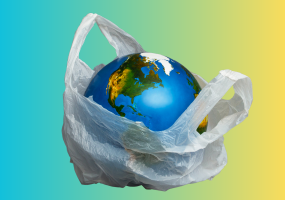Cold brew coffee has been all the rage recently. It's become even more popular when big coffee chains like Starbucks started offering it in their menu. The taste is very different from a traditional brew. There is an intensity to its flavor that's smoother and rounder compared to that of a traditional brew. Some though are not convinced and would very much prefer their beloved coffee to taste the way it's supposed to. So what is cold brew coffee and why are so many people getting on this brewing bandwagon?
Cold brewing is a process wherein the coffee grounds are steeped in cold water or room temperature water for 12-24 hours. Not to be confused with iced coffee, wherein coffee is initially brewed or made with hot water then subsequently poured over ice. The cold brew process apparently has been in existence in the eastern part of the world for quite some time and has now become more popular in the other half of the world.
Brewing coffee, whether hot or cold, is basically an extraction process of the soluble flavors in the coffee beans. With hot water, one reaction occurs with the coffee coming into contact with the hot water, and the other reaction occurs as it cools down. Certain oils and acids that are soluble at higher temperatures are extracted and as it cools down, another reaction occurs that creates the acidic and bitter coffee taste.
Cold brewing, on the other hand, is notably less bitter because the cold or room temperature does not extract the same acids and levels of caffeine that hot water does. It extracts at a slower pace and retains most of the beans' original flavors. This creates a very different taste to one that has been brewed with hot water.
One is now left wondering whether one is better than the other. The answer is not so simple because the cold brew is different from the traditional brew, in the same way, a lager is different from ale. There are certain advantages to cold brewing compared to a traditional brew. A cold brew is notably less acidic than a traditional one, therefore, the lesser odds of hyperacidity, acid reflux, and other related issues.
The process is also considerably less complicated as the coffee grounds can be left steeping in room temperature or cold water overnight without any extra fuss. Unlike hot coffee, the cold brew will not get any more acidic and bitter if it cools down as it does not undergo the same chemical reaction as mentioned earlier. The cold brew has a shelf-life of about two weeks, significantly longer than that of a traditional brew before it goes stale. There's also no need for electricity, unlike regular coffee or espresso machines, as a cold brew merely requires a long good soak and a filter. There are famous cold brew units like the Toddy Cold Brew System but it's so much cheaper to make with regular kitchen items.
One major downside to cold brewing is time. Although not as complicated to prepare as a traditional brew, it definitely takes longer to prepare as it can take half or even the entire day to steep. Unless it's been prepared earlier, one cannot just have a cold brew after 5 to 10 minutes of prep. The other downside is mostly a taste preference as some people complain that it just not the same as enjoying a fresh hot brew.









